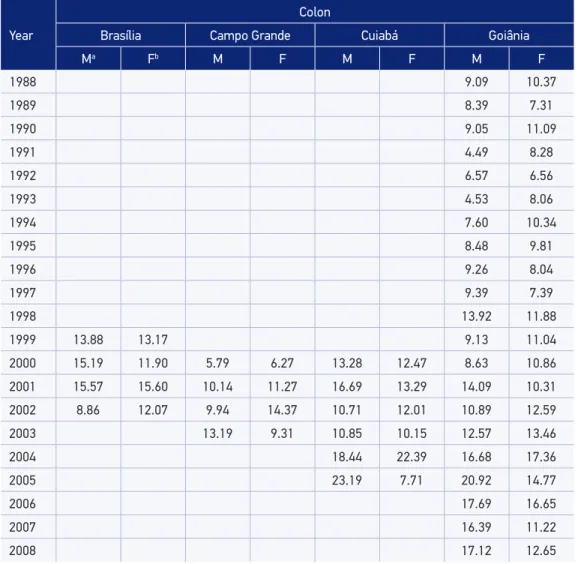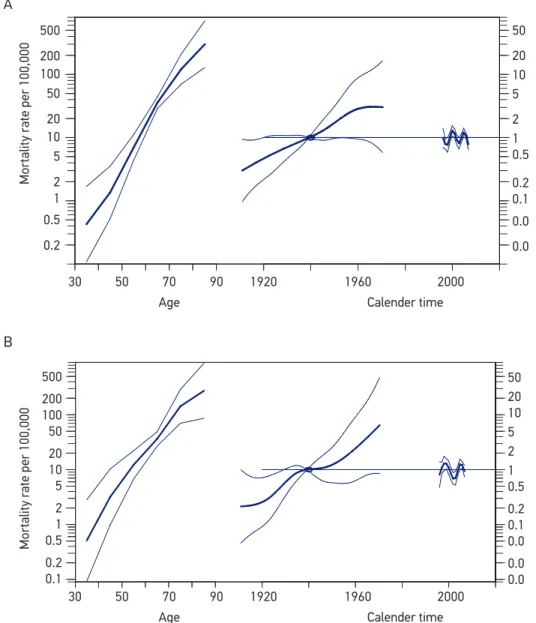Rev. bras. epidemiol. vol.19 número4
Texto
Imagem




Documentos relacionados
The recommendations to breast cancer early detection in Brazil, updated in 2015, propose early diagnosis and also screening tests of women in the age group from 50 to 69
1–3 represent survival curves (for all patients, colon cancer patients and rectal cancer patients, respectively) related with the number of lymph nodes assessed in surgical
The number of deaths caused by cancer of the trachea, bronchial cancer and lung cancer in Brazil, according to the Brazilian mortality database in 2003 was 11,057 deaths among
This study aims to describe the pattern of trends in lung cancer mortality rates in Brazil and identify the influence of age, period and cohort effects on these rates among men
Cancer mortality in main anatomical sites in selected cities, males,
Analysis of trends in mortality rates in young adults (20-24 years) in Brazil showed a slight increase in all cancer sites and a marked rise in brain cancer, both in males and in
Poly(ADP)- ribosylation of the 113-kDa protein in rectum cancer tissues might be enhanced with its proliferative activity, and poly(ADP)-ribosylation of the same protein in
Breast cancer screening recommendations (in asymptomatic women) were: (i) strong recommendation against mammogram screening in women under 50 years of age; (ii) weak
